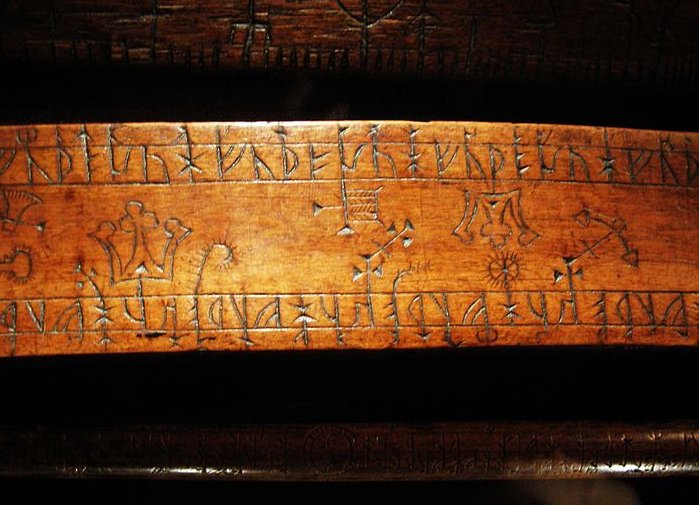AncientPages.com - The Vikings used a Runic calendar often written on parchment or carved onto staves of wood, bone, or horn. The year was divided into moon phases and the calendar reflected the seasons.
Sometimes, during summer it was difficult to observe the Moon because nights are so bright in Scandinavia that it is almost impossible to spot the Moon, especially in the northern parts.
Detail of a Runic Calendar, showing the three rows of symbols. Based on page 104 of F.E. Farwerck's Noord-Europese Mysteriën. Image credit: Wikipedia
The Vikings also observed how high the sun was in the sky because like all people they depended on weather for their survival. The year was divided into two equally long periods – summer and winter. A person’s age was counted in the number of winters he had lived.
The oldest discovered Runic calendar is the Nyköping staff from Sweden. Archaeologists and historians, think it is from the 13th century. Most Runic calendars are from the 16th and the 17th centuries.
Worm’s Norwegian runic calendar described in his book Fasti Danici dating back to 1643.
The drawing only shows the winter season lasting from 14 October to 13 April. The summer season on the other side of the bone from a whale or big fish was never copied, and both the pendant and the calendar have unfortunately been lost.
A typical Runic calendar consisted of several horizontal lines of symbols, one above the other. Special days like solstices, equinoxes, and celebrations were marked with additional lines of symbols. The Norse calendar system was also created using the Younger Futhark alphabet combined with three additional symbols, giving every day of the year a corresponding rune or combination of runes.
See also:
Runes: Facts And History About Odin’s Secret Language
Unravelling The Mystery Of The Ulfberht Sword – An Ancient Viking Artifact Far Ahead Of Its Time
The darkest period was named “Skammdegí” (the Dark Days) and the year’s brightest period “Nóttleysa”, meaning “insomnia” that many Scandinavians still experience today.
The winter months are Gormánuður, Ýlir, Mörsugur, Þorri, Goa and Einmánuður.
The summer months are Harpa, Skerpla, Sólmánuður, Heyannir, Tvímánuður and Haustmánuður.
Some years it may look as if it has been an additional 13th month to adjust the calendar: Silðemanuður (the Late Month).
The Runic calendar is a perpetual calendar which means it was designed to be valid for many years and allow the calculation of the day of the week for a given date in the future.
Copyright © AncientPages.com All rights reserved. This material may not be published, broadcast, rewritten or redistributed in whole or part without the express written permission of AncientPages.com
Expand for referencesReferences:
Thor News – The Viking Calendar
